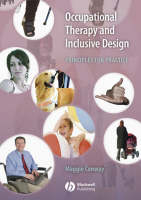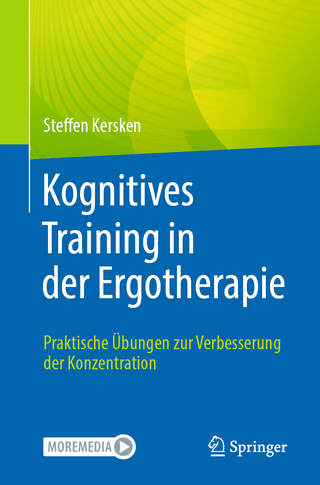
Occupational Therapy and Inclusive Design
Wiley-Blackwell (Verlag)
978-1-4051-2707-3 (ISBN)
Occupational Therapy and Inclusive Design provides occupational therapy practitioners and students with the ability to confidently problem solve, clinically reason and make sound professional judgements regarding the suitability of products/artefacts and environments for their clients.
The relevance of design concepts to Occupational Therapy are illustrated in a broad context with reference to the folklore of disability and disability discourse, the profession’s philosophy, conceptual models of practice, relevant legislation and review of Health and Social Care discourse. Ergonomic tools and techniques for practice are reviewed and related to the seven principles of Universal Design. Case scenarios are presented and illustrated with pictures and drawings to guide the reader through the inclusive design process as it relates to occupational therapists in a variety of settings.
Additionally, the book aims to give a voice to occupational therapists as specifiers of equipment, property adaptations and increasingly, as advisors to new dwelling and other building projects, with the aim of influencing manufacturers and building agencies in the adoption of inclusive design principles at the product/building design phase. This publication’s unique focus is to present an integrated account of the relevant policy supporting service provision, in conjunction with core Occupational Therapy philosophy and the application of principles of Universal Design to case scenarios.
Maggie Conway is a Borough Director for Therapies in a London Mental Health NHS Trust and an occupational therapist with over 20 years experience. In addition to her qualifications in occupational therapy, she has an MA in Design Research for Disability. She has held a variety of clinical and academic appointments in occupational therapy, but has particular experience in housing.
PART I SOCIOCULTURAL AND PROFESSIONAL CONTEXT. Chapter 1 – Cultural Production of Disability.
Chapter 2 – Disability Discourse.
Chapter 3 – Theories and Models of Disability: Overarching Service.
Chapter 4 - Ecological Conceptual Practice Models.
Chapter 5 – Frames of Reference and Approaches Supporting Practice.
PART II INCLUSIVE DESIGN; PRINCIPLES FOR PRACTICE.
Chapter 6 – Knowledge from the Field of Design.
Chapter 7 – Knowledge from the Field of Ergonomics.
Chapter 8 - Applied Examples.
PART III SOCIOPOLITICAL CONTEXT.
Chapter 9- The Sociopolitical Environment.
.
| Erscheint lt. Verlag | 23.5.2008 |
|---|---|
| Verlagsort | Hoboken |
| Sprache | englisch |
| Maße | 173 x 246 mm |
| Gewicht | 526 g |
| Themenwelt | Medizin / Pharmazie ► Physiotherapie / Ergotherapie ► Ergotherapie |
| ISBN-10 | 1-4051-2707-4 / 1405127074 |
| ISBN-13 | 978-1-4051-2707-3 / 9781405127073 |
| Zustand | Neuware |
| Informationen gemäß Produktsicherheitsverordnung (GPSR) | |
| Haben Sie eine Frage zum Produkt? |
aus dem Bereich


